My friend is a newly checked diabetic, can my friends please give a daily eating with list?
A block of tofu, an egg, two taels of lean meat, a glass of milk, two pounds of vegetables, an apple, no more than half a pound of staple food, I believe you can do it, but I don't believe you can stick to it
Thanks for the invite. The vast majority of people with diabetes have type 2 diabetes, which is insulin-dependent diabetes. Its most fundamental cause is insulin resistance, i.e. hyperinsulinemia. Therefore, it is recommended that you check your islet function status, you can check the fasting blood and 2 hours after meal blood insulin status (you can also check C-peptide, both are the same). Of course, it is also necessary to check the condition of kidney, fundus of eyes and atherosclerosis.
Knowing the basic conditions of diabetes, let's talk about how to match your diet.
First.Sugar is absolutely drastically, drastically controlled and preferably not eaten(Keep this in mind)! This is because sugar intake will not bring any beneficial benefits to the control of the disease except increasing the burden on the pancreatic islets. It must be emphasized here that the sugar here includes sweet sugar such as table sugar, carbonated drinks, all kinds of milk tea, all kinds of high fructose corn syrup-containing foods, etc., and not too sweet sugar mainly refers to rice and noodles, etc., in addition to starchy foods such as sweet potatoes, potatoes, yams also need to be greatly controlled and preferably not eaten. In addition, some fructose-containing foods such as fruits (fruits also contain glucose) are also best avoided!
Written here, I believe that many friends will immediately have questions: this is not eat staple food rhythm ah, the body energy will be insufficient? Don't worry, understand our body's energy supply system you will not be nervous. Our body's energy supply system has two, one is the starch-glucose system, the other is the fatty acid-ketone body system, the former is related to our staple food, the latter is based on fats, meat food. Eating with fats as the main energy supply is perfectly adequate to meet the energy needs of the body's tissue cells and will not have an impact on blood sugar.
It is important to talk about the choice of fats here, some fats rich in Omega 6 unsaturated fatty acids should be avoided as much as possible! Because it increases the chronic inflammatory state of the body and aggravates diabetes, lard, olive oil, coconut oil, and medium chain fatty acids are great choices.
It is also important to remember that it is important to increase the intake of vitamin-rich vegetables, which provide essential nutrients to the body's tissue cells. Cruciferous vegetables, leafy vegetables, root vegetables, sprouts, and cauliflower vegetables are all good choices. In addition, increasing the supplementation of fermented foods is also beneficial for blood sugar control, such as fermented black garlic, tempeh, and kimchi.
The above is a little personal insight, welcome to my headline-Jiangsu Provincial Cancer Hospital Li Feng.
If you have just been diagnosed with diabetes, don't rush into taking your medication just yet, check your three meals a day and start with each one to create an eating plan.
The amount of each meal can be adjusted according to your weight. It is important to change different varieties of food every day and not repeat the same meals every day. Here is a list of the three types of meals available.
Breakfast: Eggs, a small piece of fried chicken breast, fried fish chunks, a piece of dried tofu, boiled soybeans (e.g. soybeans in eggplant sauce), and a few slices of barbecued pork or marinated pork. Drink with milk, yogurt, soy milk and other high protein drinks. Staple food can be accompanied by a small amount of coarse grains such as quinoa, hummus, corn porridge, barley porridge, fish fillet congee, chicken congee, skin and egg congee, Chai fish and peanut congee, bread made of whole grains and a variety of grains, steamed buns, buns, pancakes and so on. Note that staple foods must be controlled in quantity, as little as possible!!! Also, pair it with some fruits and vegetables with low sugar content, such as a few slices of cucumber, a few strips of boiled spinach, baby bok choy or a few pieces of boiled broccoli.
Lunch: It is important to always eat fish or meat! Otherwise, you will feel hungry, and when you are hungry, you will eat indiscriminately instead. Salmon, tuna or other seafood is first. Chicken is next. Chicken breasts are best, but chicken thighs with the skin on can also be eaten. Then there are meats, pork, beef or lamb are all fine. Meat can be eaten regardless of fat or lean, but be sure to control the amount!!!! Vegetables should make up half of the whole portion in your lunch. And the staple food should not be more than a quarter of the whole lunch at most. And this quarter of the staple food, try to avoid eating white flour, refined rice, instead of high fiber content of mixed grain beans rice or bread. In addition, less soup, less drink alcohol, can be replaced by plain water or tea.
Dinner: Finish six hours before going to bed. Skip the main course for dinner if possible. Take vegetables, fruits, mushrooms, etc., with a small amount of fish or meat. You can eat raw cucumber, lettuce, red and white radish, celery, colorful peppers; vegetables that can not be eaten raw, such as cabbage, cabbage, winter squash, pumpkin, knotty gourd, squash, cabbage, etc., can be boiled in water and eaten.
Every diet control is different from person to person. If dietary control does not achieve good results, it is best to consult a doctor as early as possible.
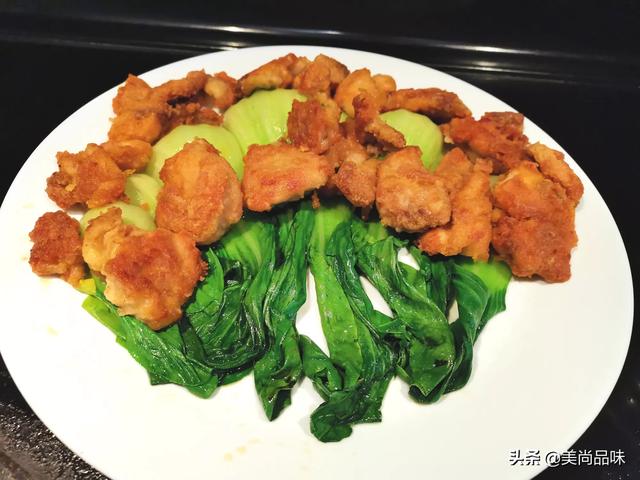


Good morning! There have been several installments of Q&A questions about diabetes, but the main thing asked is different, and today this topic is the question of a newly checked diabetic about how to mix and match well with daily eating. It is safe to say that this is a very important question for all diabetics. Because one of the five major factors of diabetes is irregular and uncontrolled eating habits, according to my friends and relatives around the diabetes narrative can be judged that this is a major factor in the disease. Therefore, it is imperative to control blood glucose steadily. There is a saying that diabetes is not scary, it is the complications of diabetes that are scary. So in order to make the blood sugar smooth standard, first of all, we should work on the diet and take it seriously. Firstly, we should change the bad eating habits in the past, use the menu at the right time, and don't eat snacks, including fruits, in addition to the three meals a day. Second, to control the amount of food, starchy staples per menu not more than two taels, if there is no sense of satiety can eat more vegetables to supplement the sense of satiety, to rice as a staple food, (the morning menu should also try to eat rice products, such as rice vermicelli, vermicelli, rice fruits and so on) and can not be too rotten, the flour staple food to steamed buns, salt rolls, vegetable buns as the main focus, eat less or not eat noodles in soup, batter, meat buns, doughnuts. Third, the choice of meat and the amount of lean pork, beef, fresh fish-based, (lamb is too hot and dry not suitable for diabetics,) a daily morning menu an egg or about 25 grams of lean pork or beef under the dried noodles, and so on, lunchtime and evening menu meat to be controlled within 80 grams. Fresh fish and shrimp can be eaten every day with a little bit too much. Vegetables are not limited, fried vegetables, boiled vegetables and soup can be even.
Four, is to control the use of oil, oil varieties vary from place to place, my region is to peanut oil, vegetable oil-based, I think vegetable oil is cool, the best for diabetics, try not to eat animal oil, frying can not be too much oil, eat vegetables, eat less vegetable soup, because the vegetable soup oil in the most.
Five, do not eat high sugar content of food, such as some candied fruit, fruit store, these dried fruit are soaked with sugar, the sugar content is quite high, pay attention to the three sugars: (sucrose, fructose, glucose) If you do a good job of these, and maintain a balanced state of mind, and strengthen the physical exercise, with the same as a normal person's life!
This is a personal opinion only!


Hello! Please let me answer your question!
People with type 2 diabetes are usually accompanied by three more and one less symptom, and more drinking, more eating, more urination, weight loss. This state makes people physically tired and weak, poor energy and brain power, but the appearance of fat and stout. To improve the quality of life and health status, it is necessary to follow the doctor's advice to take medication on time, monitor blood glucose and diet and lifestyle control. So, how should diabetic people match their daily diet?
Wei Wei suggests the following:
What and how much is appropriate to eat?
This dinner plate gives you an overview! Figure 1 ↓↓↓

Take a plate with the specifications as shown below, about 15~16 cm in diameter, you can choose a bigger plate if your body is tall, or a smaller one if your body is thin.
Arrange the food you eat at each meal according to Figure 1:
Vegetables (sauteed veggies, cold veggies, salads are fine, including mushrooms and seaweed) take up half the space;
Meat, fish, shrimp and other aquatic products as well as soy products accounted for 1/4, it is recommended that you choose to steam, boil, ton and other low-temperature cooking methods, avoid frying, barbecue and processed meats, but also try to eat less fat meat, lean meat has a higher nutritional value;
Staple food accounts for 1/4, it is recommended to choose whole wheat buns, brown rice, mixed beans and rice, corn tortillas and other types of coarse and mixed grains.
 Try to diversify the choice of food types, such as vegetables can be in accordance with the appropriate amount of seasonal change with the pattern, meat to high-protein, low-fat fish is the best, at least 1/3 of the staple food to add coarse grains, you can also choose yam, corn, purple potatoes and other grains to increase food diversity.
Try to diversify the choice of food types, such as vegetables can be in accordance with the appropriate amount of seasonal change with the pattern, meat to high-protein, low-fat fish is the best, at least 1/3 of the staple food to add coarse grains, you can also choose yam, corn, purple potatoes and other grains to increase food diversity.
Regarding fruits, sugar lovers are allowed to eat them when their blood sugar is stable. Various antioxidants and water-soluble vitamins in fruits help to protect cardiovascular health, and it is recommended to eat 200 grams per day.
Dietary management of diabetic people needs long-term persistence, the most afraid of laxity, I hope that sugar lovers can stick to it and persevere.
I hope my answer helps you, good luck!
Yesterday there is a friend of mine called me, said just after checking blood sugar, the first day of fasting blood sugar 9.8mmol / L, scared to hurry to control the control of diet, the next day and measured the blood sugar, 10.02mmol / L, asked me what to do?
My friend this is already properly diabetic.
In fact, before this, his blood sugar has been abnormal, measured many times, has been more than 6:00, more than 7:00, I told him many times, to adjust the diet structure, but he is the leader of a certain unit, ah, usually busy, socializing, do not have time to exercise, of course, to control the diet has not been adhered to.
It's now properly diabetic.
What should we do? Of course it's still a matter of controlling your diet and exercising consistently!
But now we're so busy, with the epidemic prevention and control tasks, and we can't exercise, so we'd better take the medicine!
I thought of his growing beer belly, told him to eat up first metformin 0.5 2 times a day, blood sugar will go down, but want to drop well, or pay attention to adhere to the exercise every day to control the diet.
With a new diagnosis of diabetes, it is possible to lower and stabilize your blood sugar over time with regular diet and exercise.
He listened to my insistence and said, "Then send me the recipe!
A lot of people will ask me for recipes, and they say, "Whichever way you say I can eat to lower my blood sugar, that's what I'm going to eat!
I tell them that there are thousands of ways to combine foods, which foods are good, and you can't eat the same foods every day. All the foods are listed and I don't have that.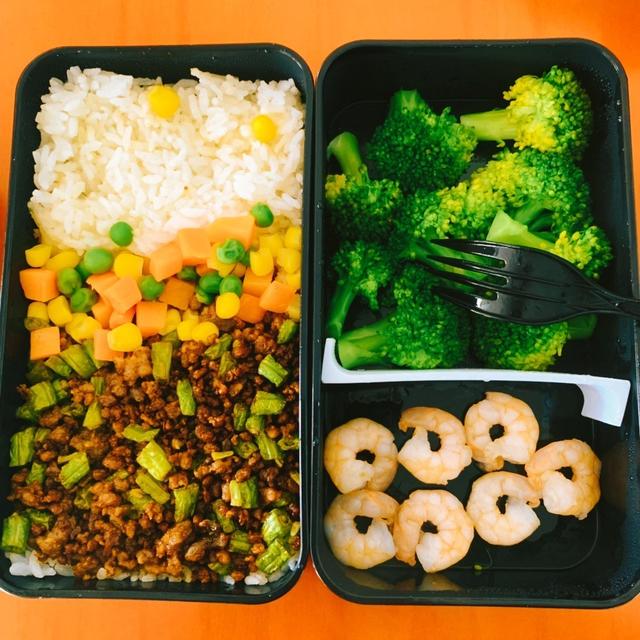
All we can tell diabetics is the general way the food goes together.
That is, make sure that you have a good mix of protein, carbohydrates, fats, fiber, and vitamins, and determine the amount of food that you eat each day according to your size and workload.
The amount of staple food should be a fist-sized amount of staple food in one meal, the amount of protein should be about 2 palm-sized amount of meat such as beef, lamb, chicken, duck and fish per day, and the amount of vegetables should be more, it is recommended to eat 500-750g of leafy vegetables per day, and the oil should be about two tablespoons per day. 250g of milk per day and at least 2000ml of water per day. These foods for 3 meals a day, basically can ensure the daily calories and to ensure that the nutrition is comprehensive and diverse.
If you really don't know how to mix and match, you can also check your blood glucose before and 2 hours after meals every day. If the difference between postprandial and preprandial blood glucose is not more than 4 mmo/L, then the amount of food eaten is also basically appropriate. If it is more than that, then you need to gradually reduce the amount of staple food.
I'm Dr. Sun, pay attention to Dr. Sun talk about sugar, continue to learn more quality health knowledge, help please like, have questions please leave a message, will reply!
Northeasterners are also just diagnosed, this is the dietitian prescribed for me, more in line with my tastes, so eat blood sugar is particularly good, share with you.
Monday's Recipe
Breakfast: Steamed corn 200g, Egg 120g, Spinach with vinegar 250g, Unsweetened soymilk 200ml (one small cup)
Morning addition: almonds (20g)
Lunch: two rice (100g of sorghum rice, 15g of rice), garlic lettuce (350g of lettuce), beef brisket with tomato (120g of beef brisket, 100g of tomato)
Afternoon addition: one kiwi
Dinner: Worms (100g of cornmeal), stir-fried cabbage (300g of cabbage), stir-fried pork with fungus (180g of fungus, 120g of pork loin).
Tuesday Recipes
Breakfast: steamed sweet potato 180g, egg 100g, bean sprouts with vinegar 200g, milk 210ml (one bag)
Morning snack: unsweetened yogurt, one small cup.
Lunch: Yam 150g, steamed butterfly shrimp with garlic (shrimp 100g), stir-fried greens (greens 380g)
Afternoon snack: one small apple
Dinner: Steamed purple potatoes 150g, Braised tofu with rape (180g rape, 150g tofu), Spinach and egg soup (100g spinach, 50g egg)
Wednesday Recipe
Breakfast: steamed pumpkin 400g, spinach and egg soup (spinach 350g, egg 60g)
AM addition: cashews 20g
Lunch: Worms (100g of cornmeal), Stir-fried Lamb with Apricot Mushrooms (150g of lamb, 180g of apricot mushrooms), Stir-fried Oatmeal with Chilli (400g of oatmeal)
Afternoon addition: one grapefruit clove
Dinner: cabbage in vinegar (cabbage 250g), shredded lettuce and chicken (lettuce 130g chicken breast 50g), shredded hot and sour potatoes (potatoes 180g), tomato and egg (tomato 60g, egg 50g)
Thursday Recipes
Breakfast: Vegetarian bun 150g, egg 100g, cold bean sprouts 200g, unsweetened soy milk 200ml (one small cup)
Morning Extra: Almonds 20g
Lunch: Worms (cornmeal 100g), stir-fried greens (lettuce 350g), stir-fried pork with celery (tenderloin 80g, celery 100g)
Afternoon addition: one kiwi
Dinner: Spinach and Egg Soup (spinach 300g, egg 50g), Stir-fried Pork with Fungus (fungus 180g, pork loin 120g) 30g (raw weight), Worms (cornmeal 100g)
Friday Recipe.
Breakfast: Doughnut 50g, Egg 100g, Cold Cucumber 200g, Soymilk 200ml
Morning refill: one small cup of unsweetened yogurt
Lunch: Mixed grain rice (rice 20g sorghum rice 80g), mushroom and greens (greens 300g, mushrooms 20g), spicy chicken nuggets (chicken nuggets 120g)
Afternoon addition: one grapefruit clove
Dinner: Stir-fried oatmeal (300g oatmeal), duck leg in sauce (100g), steamed corn 100g, seaweed and eggdrop soup (seaweed 5g, egg 50g)
Saturday Recipes
Breakfast: steamed corn 180g, egg 100g, spinach with vinegar 300g, soy milk 200ml
Morning Extra: Almonds 20g
Lunch: red beans and rice (red beans 40g rice 10g), steamed butterfly shrimp with garlic (shrimp 100g), stir-fried cabbage (cabbage 300g)
Afternoon snack: one small apple
Dinner: Cold Mixed Vegetable Noodles (Mixed Vegetable Noodles 70g, Shredded Cucumber 150g), Braised Tofu with Vegetables (180g of Vegetables, 180g of Tofu)
Sunday Recipes
Breakfast: Vegetarian bun 150g, egg 100g, cold bean sprouts 150g, soy milk 200ml
Additional morning meal: nuts (almonds 20g)
Lunch: two rice (120g millet, 15g rice), cabbage in vinegar (250g cabbage), stewed beef brisket with radish (120g beef brisket, 100g radish)
Afternoon snack: one small apple
Dinner: Stir-fried baby bok choy (300g of baby bok choy), stir-fried pork with shiitake mushrooms (100g of shiitake mushrooms, 120g of pork loin), shredded potatoes with hot and sour sauce (150g of potatoes).
Before answering this question, first of all, I would like to apologize to the person who asked this question. You did not give a detailed description of your friend's current situation (e.g., age, gender, weight, medical history, etc.), so I cannot give you a detailed list of daily meals.
However, I will give some advice on daily eating for diabetics.

For diabetics nutritional therapy needs to follow the following principles
1 Control energy intake, energy intake should be determined according to the condition, blood glucose, age, gender, height, weight, activity level, and the history of the disease and the presence or absence of complications, and the amount of intake should preferably be slightly less than the standard body weight.
2, to ensure that the intake of carbohydrates Although many people tell you have diabetes to drink less carbohydrate food, but the main source of carbohydrate energy, can reduce the decomposition of body fat and protein, to prevent ketonemia. Appropriately dialing up carbohydrate intake based on sensible control of total energy also helps to increase insulin sensitivity, stimulate glucose utilization, reduce hepatic glucose production and improve glucose tolerance. Carbohydrate intake of 50-60% of total energy per day is sufficient.

3, limit fat and cholesterol, because diabetic pancreatic secretion is insufficient, the body fat decomposition will be accelerated, will cause lipid metabolism disorders, when the fat intake is too much or improper, it is easy to trigger hyperlipidemia and cardiovascular and cerebrovascular complications. Generally, fat accounts for 20-30% of the total daily intake.
4, the right amount of protein, the diet should have more than 1 / 3 of high-quality protein, such as: dairy products, fish, eggs, lean meat and so on.
5, rich in dietary fiber. Dietary fiber itself for diabetes has a very good preventive effect, but also to improve glucose metabolism, lower blood pressure and lipid effects. Insoluble dietary fiber can promote intestinal peristalsis, reduce food through the intestinal tract time, reduce absorption, alleviate the role of postprandial blood sugar. Generally 20-35g/d per day.
6, a reasonable number of meals, three meals a day must be rationalized, formalized, timed, can no longer overeat, want to eat. You can set three meals a day each meal 1/3, can also be 5 meals a day, 1/5, 2/5, 2/5 distribution to allocate.
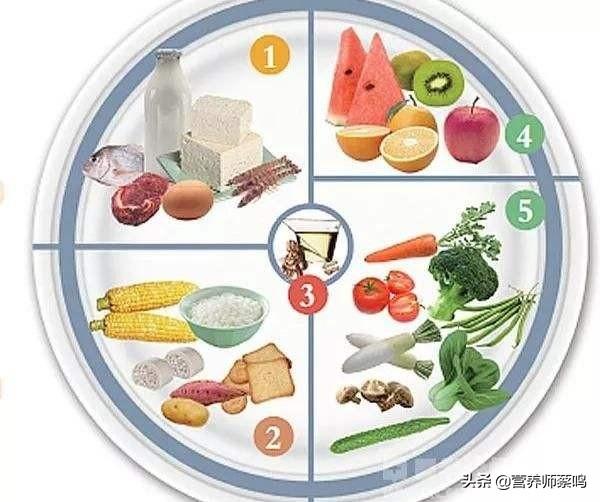
So how do people with diabetes come to calculate our total daily energy intake?
For diabetics energy control is good, food is good, and control is good, so the first thing you need to know is your ideal weight:
Ideal weight (kg) = height (cm) - 105
Then find your energy requirement per kilogram of body weight for the day
Resting at home requires 15-20 kg of energy per kg of body weight per day
Light laborers need 30 kg of energy per kg of body weight per day
Moderate manual laborers require 35 kg of energy per kg of body weight per day
Heavy manual laborers require 40 kg of energy per kg of body weight per day
This calculates the total energy requirement for a diabetic for the day:
Total energy in a day = energy needed per kilogram of body weight in a day x ideal body weight
Organize your day's meals based on this total energy.
My mother has suffered from diabetes for years, and a proper diet can prevent complications. There are three things to keep in mind when eating: protein, fat, and a balanced intake of sugar. The following is an excerpt from my mother's daily diet for reference only
Breakfast: oatmeal, buckwheat buns, veggie chowder with three mushrooms (straw, winter, green) and spinach.
Chinese food: Lean pork and celery, brine shrimp, seaweed and egg soup, kiwi, a little black rice.
Dinner: tortilla, fried fish, eggs, cucumber slices, peanuts and rice with Chen vinegar, soybean pickles, grapefruit.
In short: Eat right, exercise right, eat healthy and live happily!
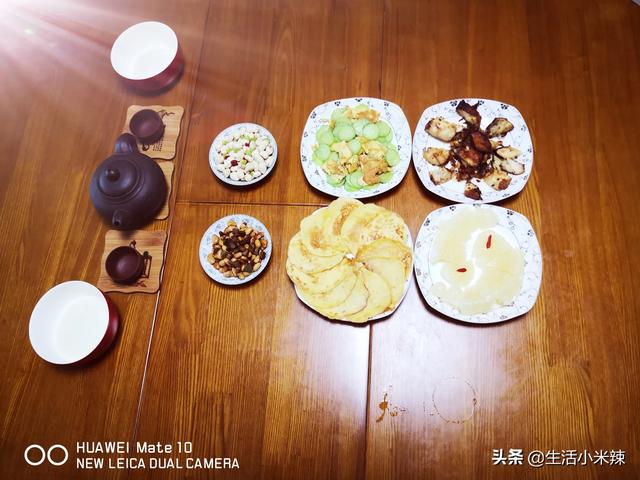
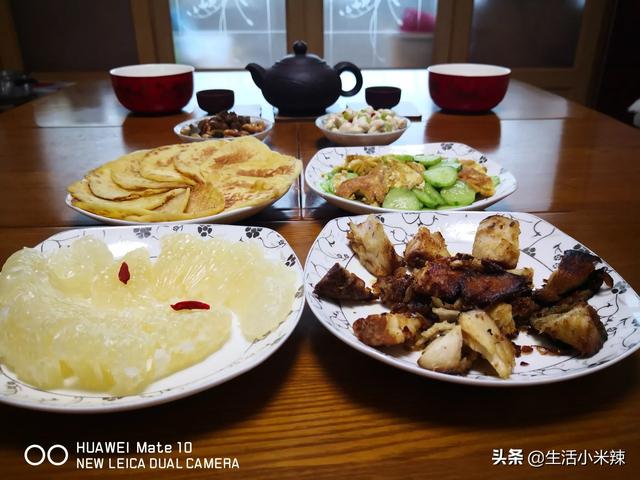
I am also a diabetic, I am 43 years old got the disease has been six years of genetic, my eating is generally normal to eat seven minutes full, in addition to not eat sugary and animal offal, usually important or more exercise and drink more boiled water, blood glucose is generally in the 7 or so.
This question and answer are from the site users, does not represent the position of the site, such as infringement, please contact the administrator to delete.